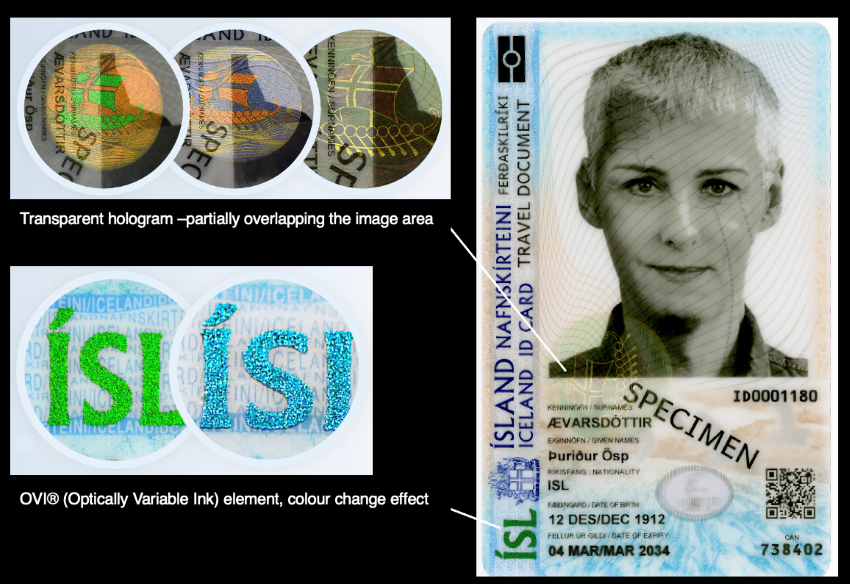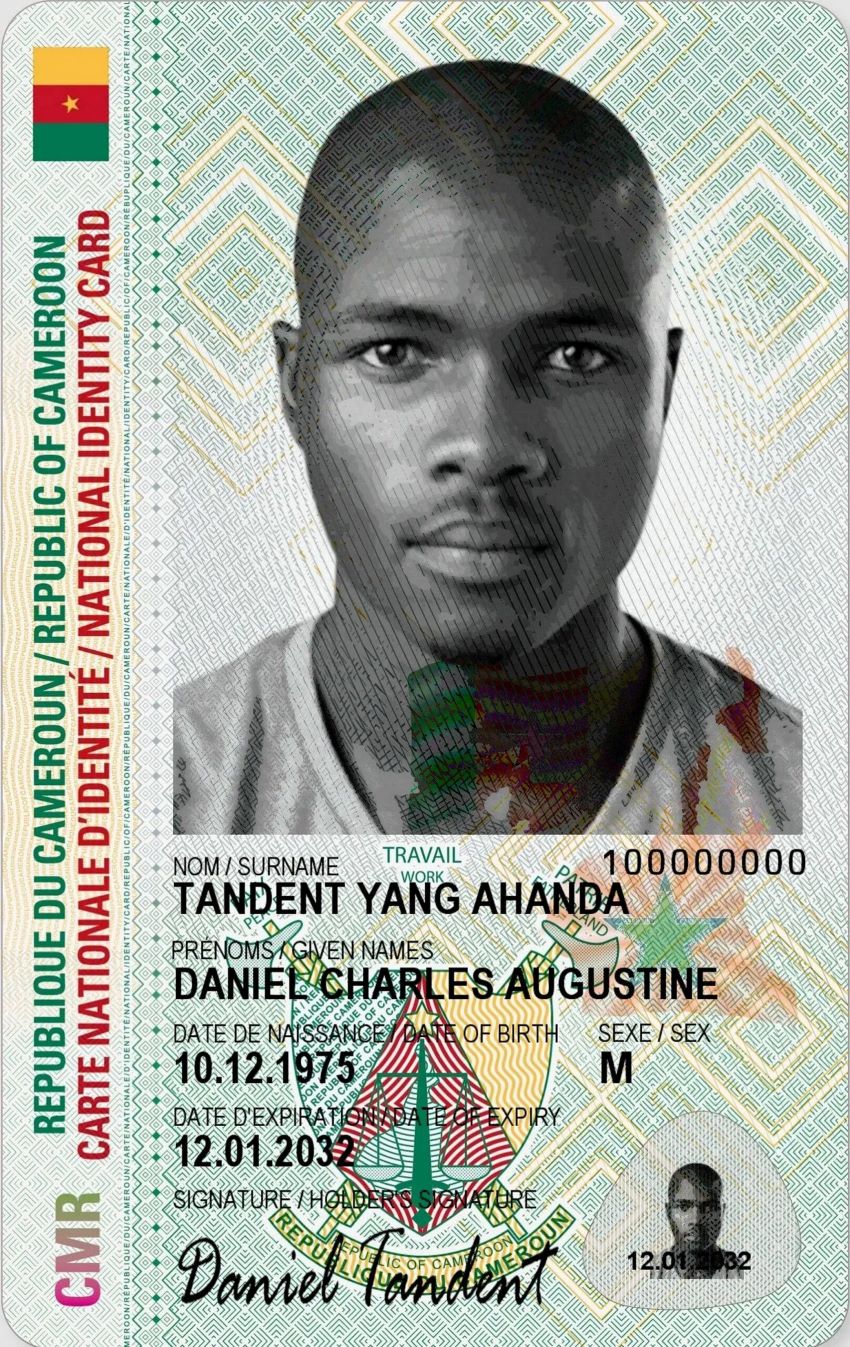



The evolution of identity documents is accelerating. As countries modernise their national ID systems, a noticeable shift is emerging – not just in digital functionality but also in the physical layout of the cards themselves.

© PWPW.
Leading this transformation are portraitoriented identity cards, which are now receiving formal recognition under ICAO’s updated TD1 specifications. At the heart of these changes, optical security features – such as holograms and optically variable inks – remain critical tools in the fight against fraud.
In March 2024, Iceland became the first country to issue a portrait-oriented ID card that fully complies with the International Civil Aviation Organization’s (ICAO) revised TD1 standards. Published in September 2023, these guidelines allow national authorities to choose between horizontal (landscape) or vertical (portrait) card layouts.
The most visible change in the Icelandic ID card is the larger portrait photograph, which significantly enhances the detection of impostor fraud during in-person checks. The Icelandic card includes three optical security features on the front:
The holographic feature is embedded over the portrait to protect against photo substitution and tampering, among the most common forms of ID fraud.
Cameroon followed suit on 17 February 2025 by launching a new generation biometric ID card, becoming the first African country to adopt the portrait-format ID-1 layout per ICAO guidelines.

This rollout, delivered by German technology provider Augentic, is part of a 15-year identity modernisation plan led by the country’s General Delegation for National Security (DGSN).
It includes about 15 overt and covert security features, such as holograms, UVvisible patterns, and encrypted QR codes.
Other key features include a biometric chip storing fingerprints, facial data, and digital signatures.
Cameroon’s adoption of the vertical ID format underscores the growing appeal of this layout – especially in countries aiming to harmonise document security with digital convenience.
In other developments, last month, Greece announced that it would transition to using a unique 12-digit personal identification number (PIN) on each national ID card issued to citizens.
The PIN will give the holder access to all state transactions, interactions, and benefits. The PIN will be visible on the physical card and digitally embedded in its chip. PIN numbers will be retrieved from a centralised national registry maintained by the General Secretariat for Information Systems and Digital Governance, and the information will also be recorded in the Hellenic Police’s identity database.
After two decades of replacing paper with polycarbonate, Greece began issuing new biometric ID cards on 25 September 2023.
These cards include security features such as a DOVID (Diffractive Optical Variable Image Device), OVI, and CLI (a laser-generated optically variable image composed of vertical lines). They also contain an RFID chip that contains the bearer’s unique biometric data, including two fingerprints, a photo, and the card access number (CAN).
Malaysia has used holograms on its national identity card ( MyKad) since 2001, including an embedded hologram on the laminated card layer. It was also the first country in the world to adopt RFID in 2001. In the next update, 2012, the National Registration Department (JPN), which oversees civil registration, added a new security feature called ‘Ghost Image’ that utilises a high-end laser to draw a translucent image on the card to mitigate forgeries. In addition, holographic images were added to increase the sophistication and complexity of the smart card.
JPN is now working on launching its new iteration of MyKad and is in the final stages of completing the new card’s structure. According to sources, the new polycarbonate identity card will have a more modern appearance and incorporate advanced laser engraving and holographic elements.
The updated identity card will replace the current version, which has been used since 2012. The upcoming refresh will be the sixth iteration of the national identity card, the on-paper identity document from 1948 notwithstanding.